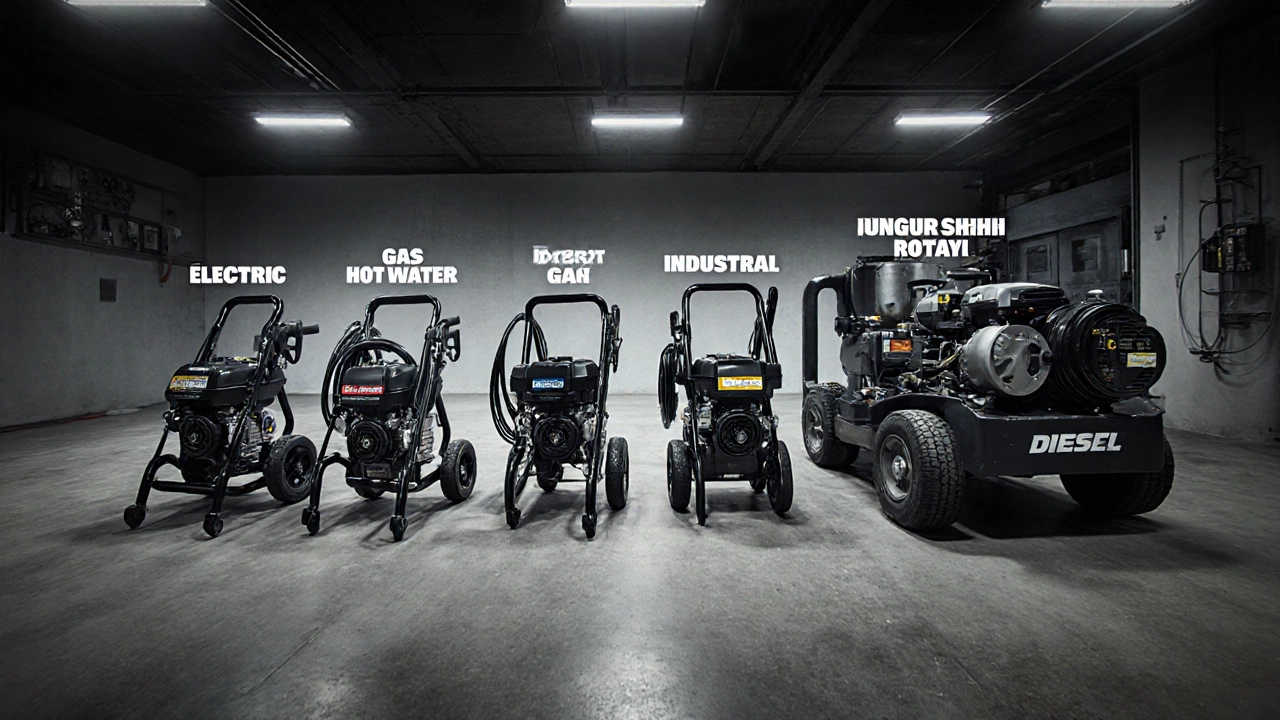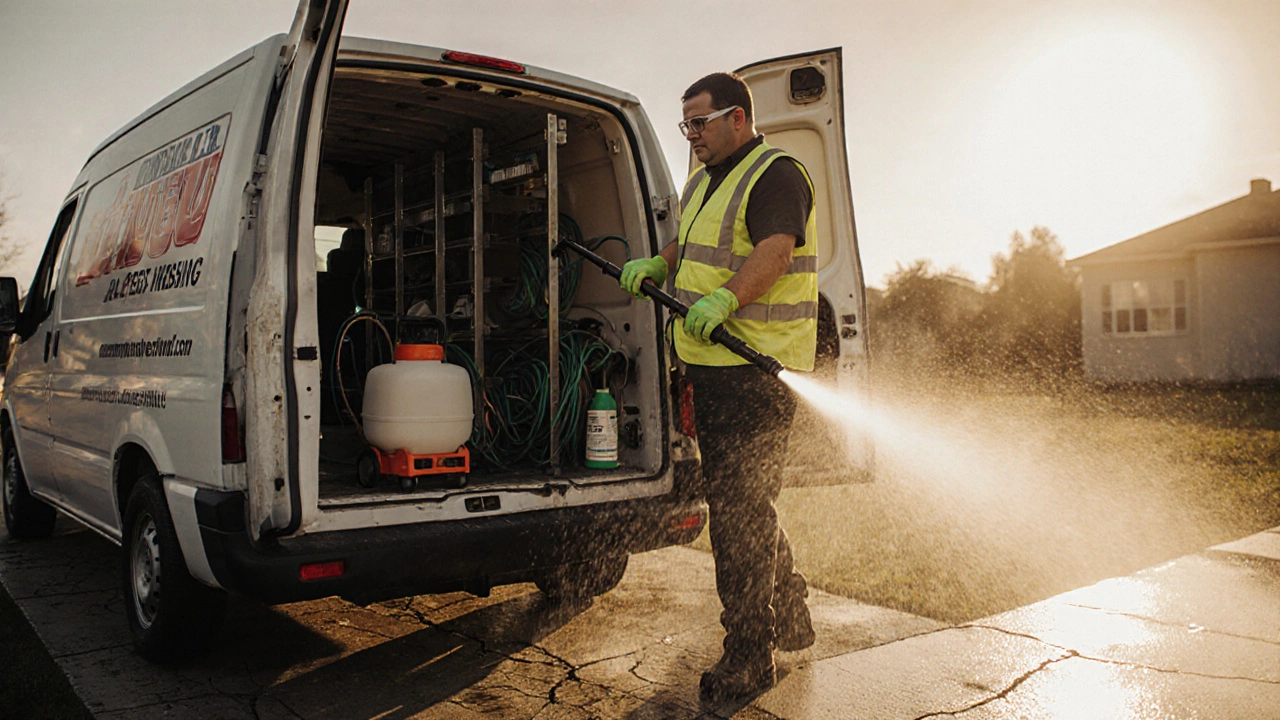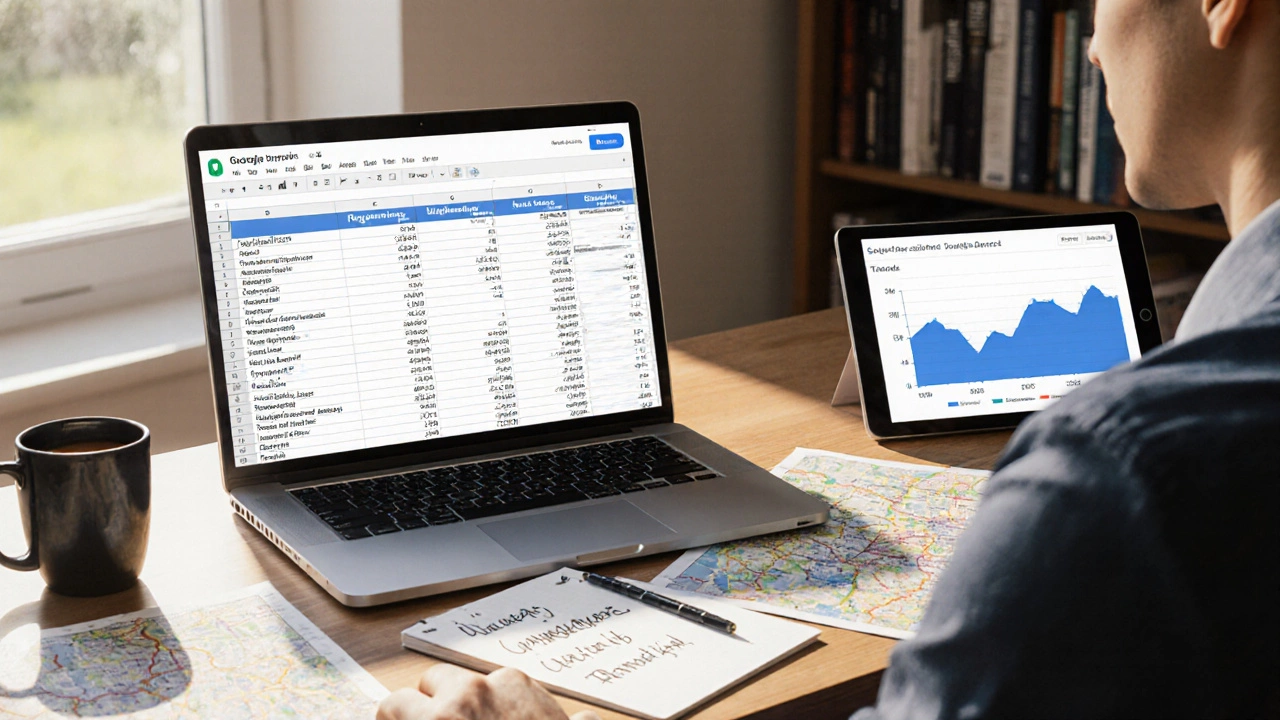Pressure Washing Pricing Calculator
Job Pricing Calculator
Calculate your estimated job price based on surface area, job type, and add-on services. This tool helps you provide accurate quotes to clients.
Estimated Price Breakdown
Enter job details to see your estimate
Starting a pressure washing business is more than buying a high‑pressure hose and hoping for customers. It requires solid research, the right gear, legal paperwork, and a clear plan to turn dirty surfaces into profit. Below you’ll find a step‑by‑step roadmap that covers everything from equipment selection to marketing tactics, so you can launch with confidence and avoid common pitfalls.
Key Takeaways
- Identify a profitable niche and size your local market before buying any equipment.
- Invest in a quality pressure washer that matches the jobs you’ll tackle.
- Write a concise business plan that includes cost forecasts, pricing models, and growth targets.
- Secure the right licenses, permits, and insurance to protect yourself and stay compliant.
- Build a simple yet effective marketing system that drives repeat and referral business.
1. Research the Market and Define Your Niche
Even the best‑equipped operator can struggle if the local demand is weak. Start by slicing your market into three parts:
- Residential services - driveways, decks, fences, and home exteriors.
- Commercial contracts - storefronts, parking lots, and fleet cleaning.
- Specialty work - graffiti removal, oil stain treatment, or post‑construction cleanup.
Use tools like Google Trends, local business directories, and neighborhood Facebook groups to gauge interest. A quick spreadsheet of competitors, their price ranges, and service gaps will reveal where you can stand out.
2. Choose the Right Equipment
Not every pressure washer is created equal. Pressure washer is a machine that uses water pumped at high pressure to remove dirt, grime, and stains from surfaces comes in several configurations. Picking the right one saves money on fuel, repairs, and downtime.
| Type | PSI (Pressure) | GPM (Flow Rate) | Power Source | Best For |
|---|---|---|---|---|
| Electric Cold‑Water | 1,200-2,000 | 1.5-2.5 | Electric | Light residential jobs, decks, patio furniture |
| Gas Hot‑Water | 2,500-3,500 | 2.5-4.0 | Gas | Heavy commercial lots, oil‑stain removal, paint stripping |
| Hybrid (Electric + Gas) | 3,000-4,000 | 3.0-5.0 | Gas (starter electric) | Season‑spanning work, mixed residential/commercial |
| Industrial Rotary | 4,000-6,000 | 5.0-7.0 | Diesel | Large‑scale industrial cleaning, concrete surfaces |
For most starters, a gas cold‑water unit around 3,000 psi and 3 gpm hits the sweet spot: powerful enough for decks and driveways but still portable.
3. Draft a Solid Business Plan
A Business plan is a written document that outlines a company's goals, strategies, market analysis, financial forecasts, and operational structure doesn’t have to be a 30‑page thesis. Keep it to five pages:
- Executive summary - one‑sentence value proposition.
- Market analysis - data gathered in Section 1.
- Service offering - list of packages (e.g., "Standard Driveway", "Full Exterior", "Commercial Lot").
- Financials - startup costs (equipment, vehicle, insurance), monthly overhead, break‑even point.
- Growth plan - timeline for adding hot‑water units or hiring helpers.
Running the numbers with a simple spreadsheet shows that with a modest 15‑hour week at an average $150 job, you can cover costs and start seeing profit within 3‑4 months.

4. Get Proper Licensing, Permits, and Insurance
Operating without the right paperwork can shut you down overnight. In the UK, you’ll typically need:
- Business registration - register as a sole trader or limited company with Companies House.
- Environmental permits - Licensing refers to the legal permissions required to operate a commercial service, often involving environmental or safety regulations for water discharge, especially if you work near protected waterways.
- Public liability insurance - minimum £2 million coverage protects against property damage claims.
- Professional indemnity - covers mistakes that lead to client loss (e.g., over‑pressurising a surface).
Contact your local council’s environmental health department to confirm discharge limits. Some regions allow reclaimed water reuse, which can also be a marketing point.
5. Set Up Pricing and Estimate Strategies
Pricing in pressure washing isn’t a one‑size‑fits‑all. Use a hybrid model:
- Flat‑rate jobs - standard driveways, decks, and patios have set prices based on square footage.
- Hourly rates - for irregular jobs or commercial contracts where time spent varies.
- Add‑on services - applying sealants, graffiti removal, or oil stain treatment as extra fees.
Example calculation: a 500 sq ft driveway at $0.35 per sq ft = $175. Add $30 for detergent and $20 for a sealant = $225 total. Keep a spreadsheet of typical sizes to generate instant quotes on the phone.
6. Build a Marketing Engine
Word‑of‑mouth still reigns, but you need a few digital tools to keep the pipeline full.
- Local SEO - claim your Google Business Profile, add photos of before/after jobs, and ask happy clients for reviews.
- Flyer drops - target neighborhoods with recent construction or high‑traffic roads.
- Partnerships - team up with landscaping firms, property managers, or real‑estate agents who can refer you.
- Social proof - post short videos on TikTok or Instagram showing grime disappearing in seconds.
Track every lead source in a simple CRM (even a Google Sheet) so you know which channel gives the best return on investment.

7. Manage Environmental and Water Regulations
Pressure washing can waste a lot of water and release chemicals into storm drains. Stay compliant by:
- Using biodegradable detergents (look for the EPA Safer Choice label).
- Capturing runoff with a portable water‑recovery tank for jobs near rivers or canals.
- Scheduling jobs on days with low rainfall to minimize runoff.
- Keeping a log of water usage - many councils require monthly reports for larger operations.
Customers increasingly value eco‑friendly practices, so promote your green approach as a selling point.
8. Operational Checklist and First‑Day Tips
Before you hit the road for the first job, run through this quick list:
- Inspect the pressure washer: hoses, nozzles, and safety valve.
- Load the vehicle with all supplies - detergents, protective eyewear, gloves, and a basic tool kit.
- Confirm the client’s address, contact person, and any access restrictions.
- Set up a portable power source if you’re using an electric unit; otherwise, check fuel levels.
- Do a brief site walk‑through to spot electrical outlets, plants, or delicate surfaces that need shielding.
- Perform a test spray on a small inconspicuous area to ensure no damage.
After the job, take before‑and‑after photos, note any extra time spent, and send the invoice within 24 hours. Prompt follow‑up often lands you a repeat job or a referral.
Frequently Asked Questions
Do I need a special licence to operate a pressure washer in the UK?
You don’t need a licence for the machine itself, but you must register your business, obtain public liability insurance, and comply with local environmental permits for water discharge.
What PSI is ideal for residential cleaning?
Between 2,500 and 3,000 psi provides enough power to remove grime without damaging wood decks, siding, or painted surfaces.
How much should I charge per square foot?
Most UK operators price between £0.30 and £0.45 per sq ft for driveways and patios, adjusting for surface type and any extra treatments.
Is insurance really necessary for a one‑person operation?
Yes. Public liability insurance protects you if water damages a client’s property or if a slip‑and‑fall claim arises. It’s also often required to get contracts with commercial clients.
Can I reuse the water I collect on‑site?
Collected water can be filtered and used for subsequent low‑pressure rinses, but you must follow local guidelines about contaminant levels before reuse.
